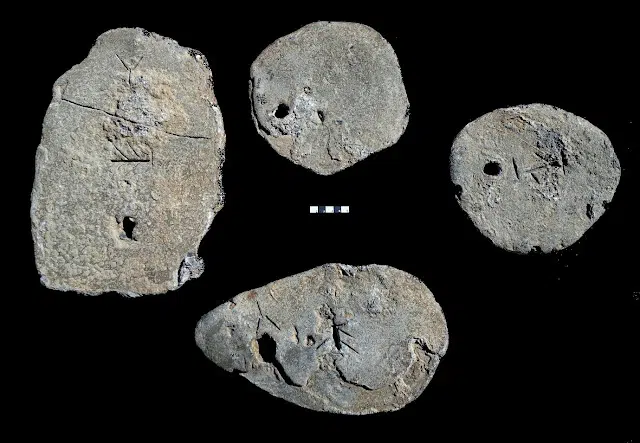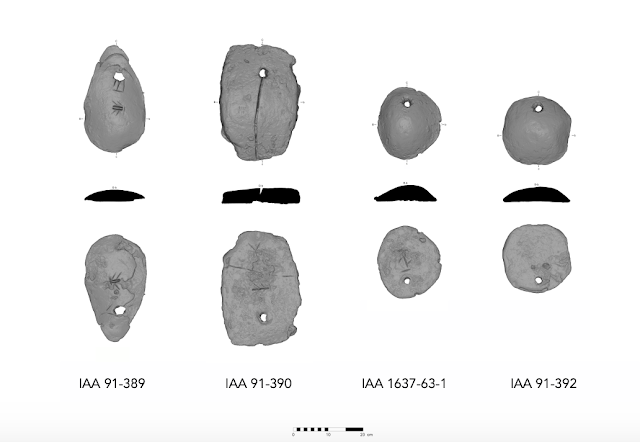
Bronze Age Minoan ingots with unique markings that were recently discovered off the Israeli coast show vast trading links between Cyprus and Sardinia, archaeologists say.
Dating back to the late Bronze age, approximately the 13th to the early 12th century BC, the ingots, with lead that had been mined in Sardinia, 2,500 km (1,550 miles) away from Cyprus, show that trade was already robust in those times.
The entire Mediterranean Sea basin was characterized by complex supra-regional relations and diplomacy, with trade that flourished between the great sea-going civilizations of the Minoans and the Phoenicians among many others.

The ingots were found as part of the cargo in a ship that had been wrecked off Caesarea, the ancient Mediterranean city that figured in so much ancient history, and one that was mentioned in the Bible multiple times.
Haaretz reports that they have markings that consist of only one syllable — but that is enough to be identified as Cypro-Minoan script, according to Yasur-Landau, who adds that such marked Cypriot ingots have previously been found off the Israeli shore, and even at the foot of the Carmel mountain range, north of Caesarea.

The ingots, found along with anchors, reveal previously unknown trading links among very distant cultures, shedding light on commercial ventures in the area as far back as 3,200 years ago, as reported by the Israel National News and the Archaeology News Network.
The archaeologists believe that Cypriots clearly imported vast amounts of lead; accordingly, the Sardinians were known to use Cypriot copper.
It is unknown if Cypriots imported the raw ore or metal that had already been smelted; either way, the lead would be processed once more in Cyprus and marked, or “rebranded,” as Yasur-Landau says, adding that the distinctive marks were in any case made into molten lead.
Naama Yahalom-Mack, from Hebrew University of Jerusalem’s Institute of Archaeology, collaborated with Professor Yigal Erel at the University’s Institute of Earth Sciences to pin down the source of the four lead ingots.
By comparing their findings to other artifacts found in and around the Mediterranean, they determined that the source of the lead was from the central Mediterranean island of Sardinia, which is west of Italy.
In an amazing discovery that links the two islands, the researchers found that the four ingots are incised with Cypro-Minoan markings which, although they remain undeciphered, are known to have been used on Cyprus during the Late Bronze Age.
The archaeologists say that these two facts are evidence of wide-ranging commercial ties between the two cultures in which raw materials were routinely transported through the Mediterranean.
Yahalom-Mack states that this is also conclusive evidence that Cyprus played such an active role in trade that its merchants were willing to travel to, or had established multiple trading links with, Sardinia, which is located more than 2,500 km (1,550 miles) away. Cyprus imported the lead to be used in the creation of luxury goods in the late Bronze Age.
Another important finding made by the researchers was that tin, a necessary ingredient in bronze itself, was likely also another trade good that was imported by Cypriot merchants.
“We think that along with lead, they also imported tin — a sought-after metal in Cyprus and the surrounding area for making bronze. These three metals — copper, lead, and tin — were sold to port cities along the coastlines, including the shores of today’s Israel,” Yahalom-Mack noted.
The spectacular findings, which were published in the Journal of Archaeological Science: Reports, came about as a result of Yahalom-Mack’s collaboration with Professor Assaf Yasur-Landau and Dr. Ehud Galili at the University of Haifa’s Institute for Maritime Studies.